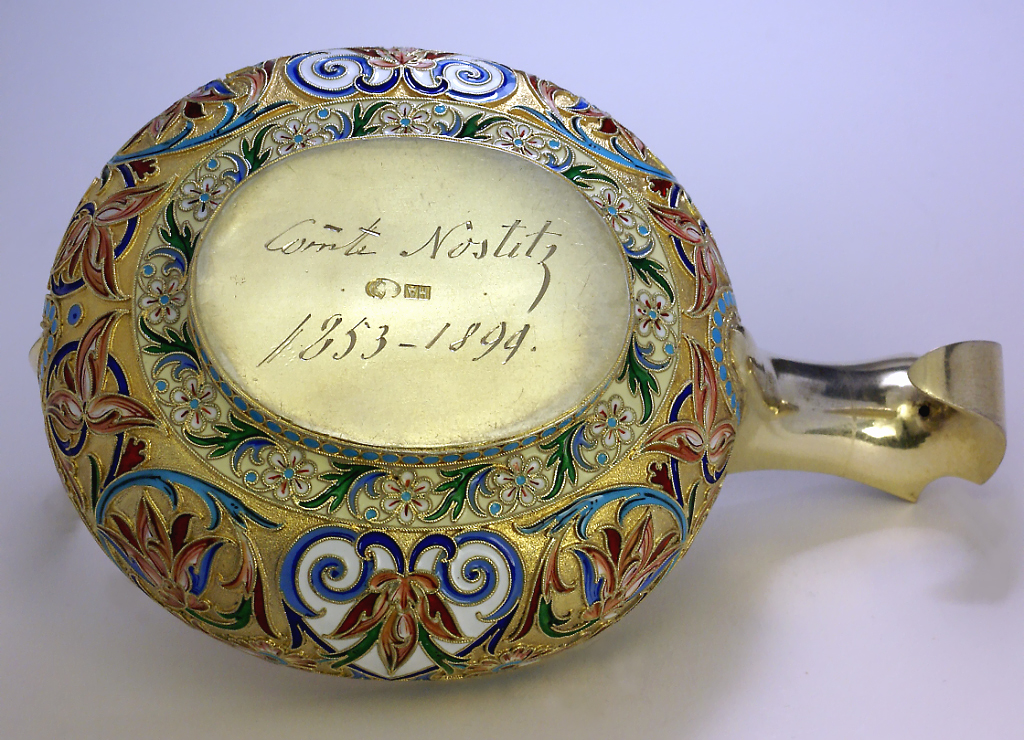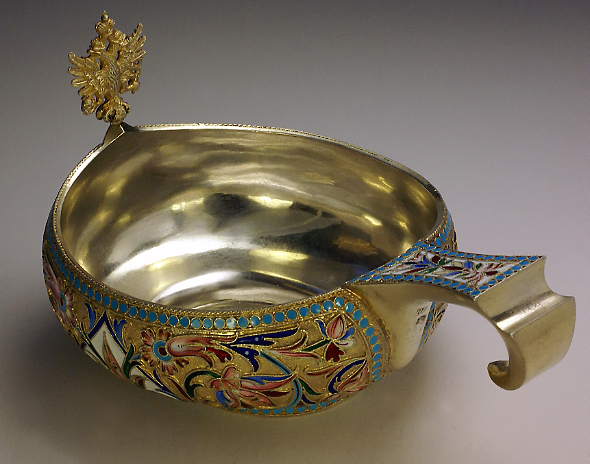An antique Russian gilded silver and painted cloisonne enamel Imperial presentation kovsh by Nicholas Alexeiv, made in Moscow in 1899, surmounted with silver-gilt double headed czarist eagle.
Condition: worn gilding of the bowl interior, excellent original enamel.
Length – 5 1/2 in. ( 14 cm )
Weight – 6,4 oz ( 181 g )
Engraved signature in French:
Comte Nostitz (Count Nostitz)
1853 – 1899 (the dates likely related to recipient of the kovsh, not to Count Nostitz)
Struck in the center of the base with master’s initials ‘HA’ for Nicholas Alexeiv and Moscow assay mark with initials of Ivan Lebedkin.
The kovsh was given away, apparently, to a foreign citizen by Count Grigory Ivanovich Nostits (Nostitz) on behalf of Czar Nicholas II.
Count Grigory Nostits, in the late 1890s – early 1900s, Colonel and military agent in France and Germany. Later on, Major-General of the Suite of Nicholas II and Chief of Staff of the Guards (between 1912 and 1915).
During the revolution, Count Nostits’s vast property was confiscated by Bolsheviks but he and his wife managed to escape from Russia and come to Paris. He died in France in 1924 or 1926.
Count Nostits is mentioned in Twenty Years as Military Attaché by Thomas Bentley Mott who was American Attaché in Paris in the early 1900s (chapter XIV – The Nostitz Romance). According to the Mott, Count Nostits was a personal agent of Nicholas II in France and reported directly to the Czar. He had a handsome house on Avenue d’Iéna “all Paris went there to eat, dance, and drink.”
Count Nostits at the 1903 costume ball in the Winter palace dressed as a boyar of the 17th century.
Count Major-General Nostits with his wife Lili.
Lili (nickname of Miss Madeleine Bouton) was an American circus performer in San Francisco. She married German Baron von Nimptsch and moved to Berlin around 1898 where they lived happily until Count Nostitz arrived in the German capital on a mission for the Czar. She divorced the Baron and became Countess Nostits.






